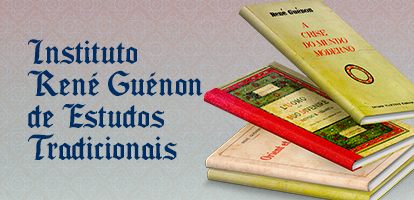The basis of a “traditional society” is the way it perceives its place in the cosmos as a link between the terrestrial and the divine. The Hermetic dictum: “as above so below” is applicable here as in much else when analysing history from a traditionalist perspective. Conversely, the counter-traditional outlook and zeitgeist of a cycle (1) is portrayed by “The Devil” Trump in the Tarot. Paul Foster Case provides a meaning of “The Devil” that is particularly relevant to this paper:
In its most general meanings, it signifies Mammon and thus big business, the conventions of society, the injustice and cruelty of a social order in which money takes the place of God, in which humanity is bestialised, in which war is engineered by greed masquerading as patriotism, in which fear is dominant. Students of astrology will have no difficulty in seeing how this corresponds to Capricorn, the sign of big business, and the sign of world fame. (2)
The most salient points for this paper are that the Traditionalist recognizes the triumph of Mammon over God and that this is personified by the centrality of business, and of material acquisition which becomes the social norm; the meaning of life. Indeed, under the money-based ethos the artist and poet might well be considered a parasite if s/he does not earn a living in a conventional manner, or alternatively does not compromise one’s aesthetic integrity for material gain as another part of the economic treadmill. Thus, in the Age of Matter, or the Kali Yuga as the Hindus call it, and the Wolf Age of the Norse, the arts become another commodity to be mass marketed and with a high turnover; a transience that is counter to the traditional conception of art. (3)
Another salient aspect of the Case description of the matter-bound Age is his mention of war masquerading as patriotism, but engineered by greed. Here again there is the dichotomy between the traditional conceptions of warrior duty and conflict which service Mammon. The difference is between that of the Knightly Chivalry of the Medieval era, where one fought for Faith and was, at least ideally, guided by an ethos; and the wars “engineered by greed masquerading a patriotism,” which are the wars we have witnessed in our current time. The final vestige of a chivalrous ethos probably manifested in World War I when enemy pilots buried the bodies of their adversaries with full military honours. Perhaps the most cogent way of explaining the traditionalist attitude towards battle is that of the dialogue on the dharma of the ksyatriya (warrior) caste of ancient India, between Krishna and Arjuna in the Bhagavad-Gita.(4) Evola discusses the concept of the metaphysical warrior in some detail, drawing on such traditional outlooks.(5) While a battle might be the bloodiest conceivable, under such chivalric élan, it is not fought in a cowardly or dishonourable manner. Hence, for example, one might cite the example of Napoleon being exiled and treated in an honourable fashion after defeat by the European alliance; a courtesy that does not seem to be much in evidence towards defeated foes in the present-day, when defeated political and military leaders such as Saddam Hussein, Milosovic and most recently Serbian General Mladic are hauled before mock trials under the nebulous concepts of “international justice”; a.k.a. the victor’s revenge. (6)
A third major concept mentioned by Case is the bestialization of humanity in the context of being bound by the base drives, and within the context of the primacy of commerce. “The Devil” enchains the human pair to matter. Like the “Devil” the human pair are depicted with tail and horns. This is suggestive of the esoteric belief in cyclic regression rather than lineal progression. The modern world is therefore, according to the Traditionalist perspective, not ascending upward toward the Godhead, nor toward manifesting the God within; but is in a downward spiral towards – metaphorically – “The Devil” – the master of our base drives which become dominate rather than being sublimated towards the higher goals as heralded for example by Nietzsche.(7) As counter-tradition negates hierarchy based on cosmic perceptions, it also turns what in modern times has been referred to by psychologists as the “pyramid of human needs” (8) on its head. Hence, the physiological drives that are normally the preoccupation of the human at their most fundamental level of existence, and which might continue to preoccupy one if chained to a cycle of drought, famine or some other such condition, become the ultimate purpose, rather than a transient phase at the most elementary level of existence. This regression takes place when a culture reaches its senile and decayed cycle. Whereas under “normal” – traditional – society, the individual fulfils his basic physiological needs as the means of being free to achieve something higher; in a counter-traditional, matter-bound society, material acquisition becomes the end in itself rather than as a means to an end. In the Medieval epoch, for example, the craftsman sought meaning in the striving towards excellence, fulfilling a wider social duty, to one’s guild, ones’ village, one’s community, one’s Lord, and ultimately one’s God. Medieval craft was therefore not economic drudgery, but a highly personalized and meaningful creativity.
The neo-traditionalist philosopher-historian Julius Evola described the character of traditional societies in Revolt Against the Modern World. (9) For the traditional society “every aspect of the individual and of the social life” is influenced by experience with the “invisible” which is more real than the “physical,” (10) based on “the fact that traditional man considered everything visible and worldly as the mere effects of causes of a higher order.” (11)
Because modern society can only see history through its own matter-based lenses, and even judges the remnants of traditional societies on that basis, (12) the concept of “caste” is equated with the modern, matter-based concept of “class” as Marx refers to class in The Communist Manifesto for example,(13) and is derided for its “injustice” and “inequality.”
Traditional society on the other hand, intuitively assumes that the hierarchy that exists is ordained as an earthly manifestation of the divine or cosmic order; the “divine right of kings” being one of the few such manifestations that are today known, albeit subject to ridicule as “superstition” and “tyranny.” For tradition, caste is a spiritual manifestation, and class one of economics. Another way of considering this is to regard caste as ordained by God(s); and class as made by humans. In a traditional society, the caste one is born into is accepted as that of divine will, and doing one’s duty and working within that caste is regarded as fulfilling a divine role, or what the Hindus call dharma. The economic consequences of caste are only secondary manifestations of the divine significance. Hence because of the matter-based perspective of modern society, which is to say, the outlook of Western Civilisation in its senile, money-bound cycle, whose influence now encompasses the world, societies and cultures, both now and in past ages, are judged according to our own present money-values. Therefore, “we” as “moderns,” will see for example, the Medieval artisan and peasant as nothing but a miserable wretch exploited by his arrogant overlords; a simplistic belief that fails to comprehend the basis of the social organism of that epoch in Western Civilisation, and culturally analogous periods in other Civilisations. “Moderns” can generally only judge the character of a society in terms of what’s in one’s pay-packet, or other matter-bound values. There is a chasm between the outlooks of modern and traditional humanity that transcend time, geography or race.






